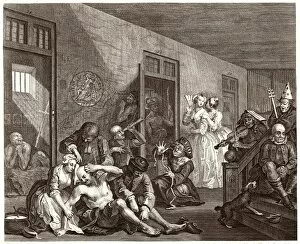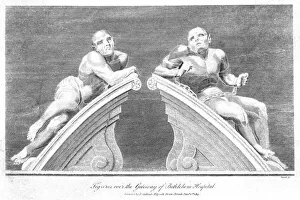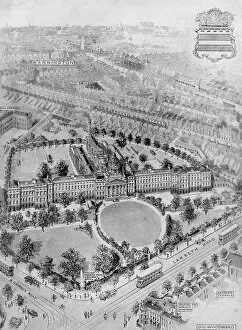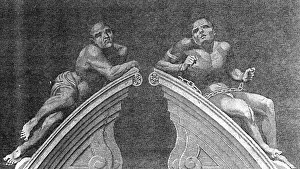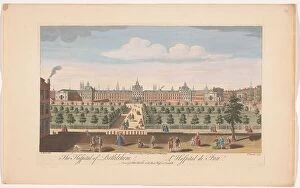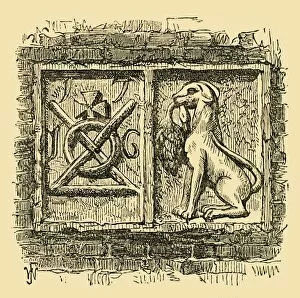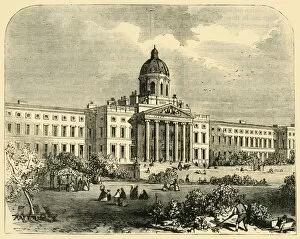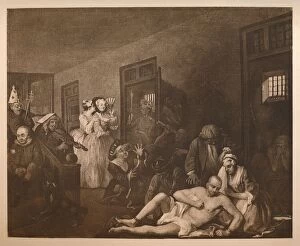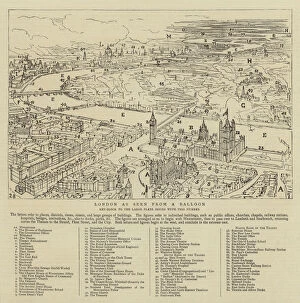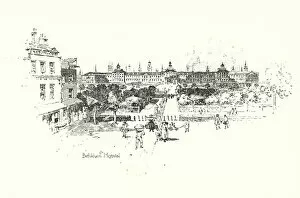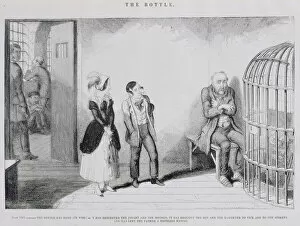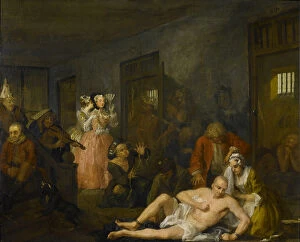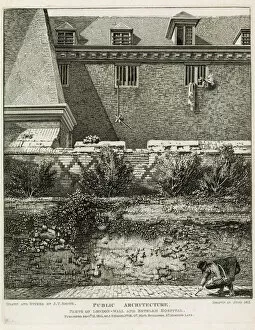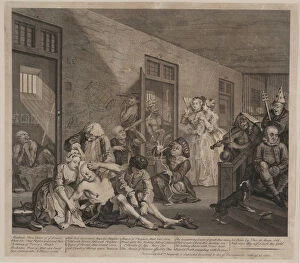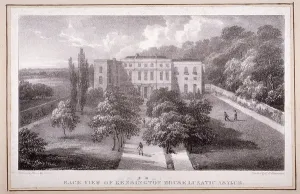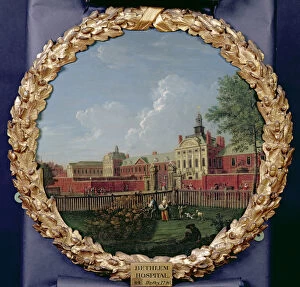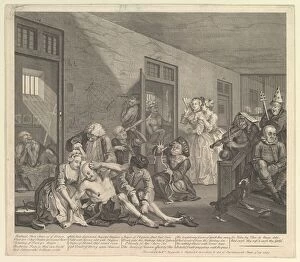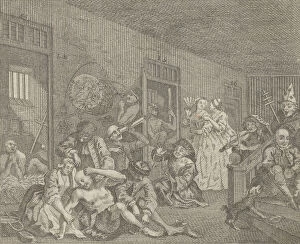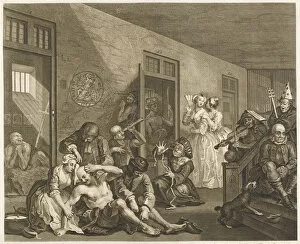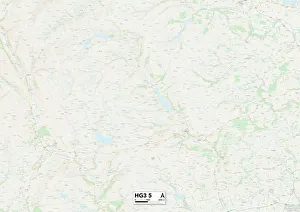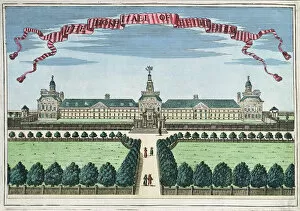Bedlam Collection
"Bedlam: A Journey into the Depths of Madness" Step into the chaotic world of "Bedlam, " as depicted in Hogarth's iconic series, "A Rake's Progress
All Professionally Made to Order for Quick Shipping
"Bedlam: A Journey into the Depths of Madness" Step into the chaotic world of "Bedlam, " as depicted in Hogarth's iconic series, "A Rake's Progress. " Plate 8 transports us to a realm where melancholy and raving madness reign supreme. William Hogarth masterfully captures the descent into insanity, showcasing the grim reality within Bedlam Hospital. Established in 1247, Bethlem Hospital has long been synonymous with mental illness. Its figures over the gateway serve as a haunting reminder of the suffering endured by countless souls throughout history. The etching Patient Nicholson further unveils the torment experienced within these walls. The Old Sign of the Dog and Duck stands witness to London's fascination with madness, capturing an era when society was both intrigued and repulsed by those deemed insane. This duality is echoed in Hogarth's depiction of "The Mad House, " where he exposes society's callous treatment towards individuals afflicted by mental disorders. William Norris' portrait from 1815 offers a glimpse into one man's struggle with his own mind, encapsulating the raw emotions that plagued many during this time period. Meanwhile, Cibber's sculpture titled "Melancholy and Raving Madness" once adorned Bethlehem Hospital's gateway – an eerie symbol forever etched in our collective memory. As we soar above London through James Carkesse’s engraving from “London as seen from a Balloon, ” we are reminded that even amidst progress and innovation, darkness still lurks beneath society’s surface, and is within this context that Lucida Intervalla beckons us to explore moments between lucidity and chaos – moments that define our understanding itself. Intriguing yet unsettling, bedlam remains an enigma - simultaneously fascinating and terrifying. It serves as a stark reminder that behind closed doors lie hidden worlds filled with anguish but also resilience; places where humanity grapples with the fragility of the mind.

